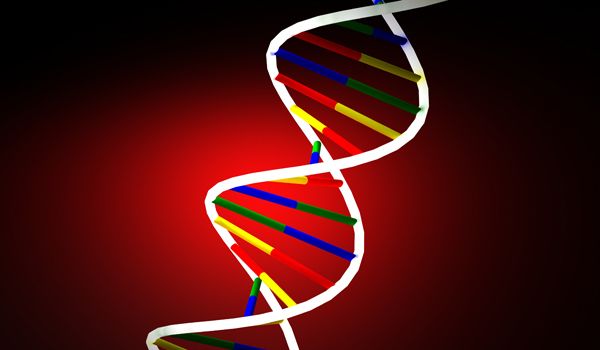Human Genome Project Marks 10th Anniversary

This month marks the 10-year anniversary of the Human Genome Project, a 13-year international effort to determine the sequence of the 3 billion "letters" in a human being's DNA.
The $3 billion project, led by the U.S. Department of Energy and the National Institutes of Health, began in 1990 and was completed on April 14, 2003. In the decade since then, scientists have achieved many important milestones in using genomic discoveries to advance medical knowledge.
Sequencing technology has vastly improved in recent years. Sequencing the first human genome cost about $1 billion and took 13 years to complete; today it costs about $3,000 to $5000 and takes just one to two days.
Probing genome function
But just knowing the sequence would be meaningless without a way to interpret it. So researchers found ways to study the genome’s function, by sequencing the genomes of 135 other organisms and surveying the global variation among human genomes. [Unraveling the Human Genome: 6 Molecular Milestones]
Researchers compared the genome sequences of other animals, such as chimpanzees and platypuses, as well as other eurkaryotic organisms (those whose cells have a nucleus), such as yeast and flat worms. From this comparison, scientists could identify stretches of DNA that have remained largely unchanged over the course of evolution. Five to 8 percent of the human genome has been unchanged for thousands of years.
One of the more surprising findings is how little of the human genome (only 1.5 percent) actually encodes proteins, the molecular building blocks that perform most of the critical functions inside cells.
Sign up for the Live Science daily newsletter now
Get the world’s most fascinating discoveries delivered straight to your inbox.
To probe this mystery, more than 400 researchers from 32 labs worldwide created the ENCyclopedia Of DNA Elements (ENCODE) consortium. In 2012, they published many important findings about how the human genome functions. These include locations in the genome that may be genetic "switches" to turn genes on and off, as well as demonstrating that more than 80 percent of the genome that was once called "junk DNA" actually does serve a function.
Other research has focused on measuring the variation among human genomes. Preliminary studies during the Human Genome Project indicated that human genomes differ by just one-tenth of a percent. Investigating the limited variation that does exist is key to understanding human health and disease.
In sickness and in health
The first catalog of human genome variation was the International HapMap Project, which compared the genomes of people from Europe, China, Japan and Africa. Biotech companies have used findings from this project and its follow-on, the 1000 Genomes Project, to study populations with and without diseases, in the hope of identifying genetic variants associated with disease. Such genome-wide association studies have resulted in the identification of thousands of variants that can influence a person's likelihood of developing a disease.
As a result of these studies, the U.S. Food and Drug Administration now requires that the labels of more than 100 drugs include information about certain genetic markers, so doctors can tailor their prescriptions based on a patient's genetic makeup.
In the 10 years since the Human Genome Project was completed, researchers have made big strides in using genomic information in diagnosing and treating cancer. For instance, the breast cancer drug trastuzumab (Herceptin) only works for women with tumors of a certain type known as "HER-2 positive." Similarly, the lung cancer drug gefitinib (Iressa) is only effective for patients whose tumors have so-called "EGFR" mutations.
Mutations in only 53 genes were linked to disease when the genome project began, whereas more than 2,900 genes are today.
But scientists have a long way to go in understanding the human genome and how it can be used for improving human health. The rise of personalized genomics and changes in the ways health information is collected and used are prompting a new era in medicine, which brings both challenges and opportunities.
Editor's Note: This article was updated at 4:04 p.m. Eastern Time on April 16. An earlier version of this story incorrectly stated that the lung cancer drug Tarceva was only effective for patients whose tumors have EGFR mutations. Clinical trials have shown Tarceva to be effective for patients without these mutations.
Follow Tanya Lewis on Twitter and Google+. Follow us @livescience, Facebook & Google+. Original article on LiveScience.com.












